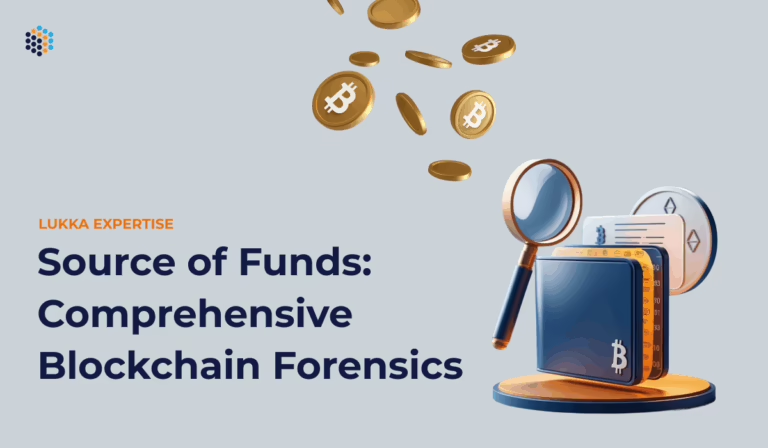Updated April 2022
Author: Suzanne Morsfield, Global Head of Accounting Solutions
Dynamic selection of a principal market is arguably the most rigorous, systematic way of addressing accounting guidance on identifying principal markets to estimate fair market value in the constantly changing and volatile cryptocurrency markets.
Recently, questions about fair value for crypto-assets have been widely reported (and opined on) in global business media. Most articles focus on changing existing accounting and reporting standards to permit all crypto-asset holdings to be reported at fair value. A key aspect and one of the most significant challenges when an asset holder estimates fair value is identifying a principal market within the dynamic nature of crypto-assets markets. What might this mean for companies in their search for a principal market? Let’s revisit some of the challenges, the accounting guidance, and a method for addressing them all.
The Challenge in Choosing a Principal Market
The crypto ecosystem’s innovative structure creates some difficulties in identifying a principal market (PM) because there are hundreds of crypto exchanges, centralized and decentralized, large over-the-counter markets, wrapped assets, bridged assets, pooled assets, derivative markets, and so on. Some questions asset holders must address:
- Many markets or exchanges are unsupervised or unregulated, featuring a range of anti-manipulation controls in different countries, so which are most reliable?
- None of these markets ever close, so when do we make the PM assessment?
- Often the market volume or frequency of trades for a particular asset pair fluctuates over time, both for different times of day and from one month to the next, so how could we sort through all that variation?
Though both US GAAP ASC 820 and IFRS 13 require that companies look for a principal market, neither standard provides an exact recipe. Instead, both standards provide a set of guidelines and principles to follow.
No method is perfect, but in the context of actively-traded crypto, the markets themselves can provide ample opportunity to meet the accounting guidelines and identify a PM. But, one does need a consistent, rigorous method that is up to the challenges of this ecosystem.
The flexibility of a principle can feel unnerving, but the flexibility of a principle may, in fact, provide more clarity about the underlying economics measured.
The guidelines in both US GAAP and IFRS suggest some focal points for getting to a PM and fair value (FV):
- Use market-based, orderly transactions
- Use the exit price (not the entry price)
- Use the market with the “greatest volume and level of activity for the asset”
- Ensure that the market used has sufficient volume and frequency
- Averaging across markets or exchanges is NOT consistent with the market identification requirements
- Understand that PM and FV can vary between entities for the same asset.
Why a Dynamic Choice method is reasonable and GAAP-aligned
Crypto-asset markets are not like traditional equity markets. This is well-established and should inform PM identification in this setting. We note that the accounting principles refer to notions such as volume, level of activity, or frequency of transactions more than once.
Factoring in all those details in the PM identification process plus the list of ecosystem challenges could leave us scratching our heads with the next set of challenges that must be addressed. At any given time, how might a crypto market’s volume, activity levels, and trade frequency be measured? And how would we sort through all the potential variation that comes from fragmented and unregulated markets that exist across multiple time zones and never close?
Neither ASC 820 nor IFRS 13 mention how often to assess principal markets for one’s holdings. However, they both emphasize looking at what exactly is happening in the variety of markets available for the asset we are trying to value. The sometimes substantial variation in prices, volume, and frequency within crypto markets for the same asset suggests reviewing the available, credible markets each time a price is needed. During that review, the volume and frequency of trading for the crypto-asset can be assessed across the available markets.
Because the market activity for crypto-assets is dynamic, it might make the most sense to acknowledge that and address it rigorously in the principal market identification process. This could lead to perhaps the most credible exit price because it would be based on an actual trade within the crypto market that has the combination of the highest governance quality score, volume, and trade recency.
VWAPs or other averages are models, and do not represent a direct exit price; furthermore, these methods often include exchanges that are poorly supervised, are known for artificial volume, or other practices that lead to material price deviations.
Does Dynamic Identification imply Opportunism?
It is reasonable to ask about opportunism that could arise from addressing the dynamic nature of this market. Questions worth considering include:
- If we choose a principal market dynamically, would that increase inappropriate opportunism?
- Would that incent companies to change their PM based on whichever market gives them the FV they want?
- Should there be a primarily static PM regardless of what is happening in the actual marketplace to avoid concerns about opportunism?
- Is the use of a static PM a safe harbor, or does it introduce governance issues of its own?
Dynamic PM
The standards are clear about the role of volume, trade frequency, level of activity, and recency when making the PM assessment or estimating FV. In the face of incredibly dynamic, changing markets, these principles not only open the door to a dynamic assessment but one might say point squarely to such an approach. Furthermore, a rigorous, model-based approach is the most systematic form of PM identification, and it eliminates the risk of opportunism as there is no discretion being exercised.
Static PM
Contrast dynamic PM with the snapshot view represented by choosing a static prime market at one point in time, which may not accurately represent PM at the time of the FV estimate. Time of day in this truly global market is a critical factor because liquidity migrates due to new competitors and constant innovation in decentralized finance faster than traditional financial markets have ever seen. Consider that new exchange entrants have established a huge market share in the months following their introduction to the crypto ecosystem, not decades as typical of traditional finance products. Also important is that this accelerated maturity is a common occurance not a unicorn event. Furthermore, technologies are truly new, not just a variation of the same, and they are in constant development. Distributed exchanges, wrapped assets, bridged assets and other innovations are constantly being developed without a precedent to follow in the traditional space, which accelerates the growing ecosystem of liquidity.
Also, the initial choice of a PM that is intended from the beginning to be primarily static may not, in the end, be as unbiased as it sounds. An independent methodology that is, in fact, looking at all the credible exchanges for the asset that needs to be fair valued should be part of a strong internal governance process that then eliminates any concerns about bias, while also maintaining much-needed independence in this area. Clearly, this can enable audit readiness as well.
As with many challenges in accounting standards, the exact path to providing a FV measurement is not fully prescribed. Accounting standards also rarely require specific documentation and processes. Internal policies and controls help provide external auditors assurance that the amounts and estimates reported actually meet the key audit assertions.
Addressing PM responsibly
Reporting entities can take steps to eliminate any concerns about opportunistic PM selection with a few simple steps:
- Conduct rigorous dynamic PM review and analysis, most accurately and efficiently addressed by using an automated technology designed specifically for the dynamic PM environment.
- Use an independent, third-party provider of rigorous, model-based, and dynamic PM identification and FV estimates.
- Ensure that this third party’s services are institutional grade and are AICPA SOC 1 and SOC Type 1 and Type 2 certified.
- Provide clear, documented, consistently-applied internal policies specifying key control items like the timing and frequency of assessment, as well as the relevant internal controls, to name just a few.
Lukka Prime
Pricing Data is Fair Market Value (FMV) pricing and valuation data for crypto assets. In the absence of a primary market, closing day, and other traditional factors needed to determine the FMV of an asset, Lukka Prime is designed to align to GAAP and IFRS guidelines in order to support post-trade reporting
Lukka’s Capabilities
Lukka is a firm that helps solve some of the greatest financial challenges in crypto, including identifying PM and FV. For more information on how Lukka puts data to work across multiple finance sectors, traditional and decentralized, as well as supports industries from insurance to Formula E, go to our website at Lukka.tech.
DISCLAIMER
THE INFORMATION CONTAINED IN THIS BULLETIN PROVIDES ONLY A GENERAL OVERVIEW OF CURRENT ACCOUNTING ISSUES RELATED TO US GAAP AND CRYPTO ASSET HOLDINGS AND SHALL IN NO EVENT BE CONSTRUED AS THE RENDERING BY LUKKA OF PROFESSIONAL ADVICE OR SERVICES. AS SUCH, THE INFORMATION PROVIDED IN THIS BULLETIN SHOULD NOT BE USED BY YOU AS A SUBSTITUTE FOR CONSULTATION WITH PROFESSIONAL ADVISORS. BEFORE MAKING ANY DECISION OR TAKING ANY ACTION REGARDING YOUR DIGITAL CURRENCIES OR THE ACCOUNTING TREATMENT THEREOF, YOU SHOULD ALWAYS CONSULT WITH AN APPROPRIATE, LICENSED TAX, ACCOUNTING, OR OTHER PROFESSIONAL. TO THE FULLEST EXTENT PERMITTED BY LAW, IN NO EVENT WILL LUKKA(INCLUDING ITS RELATED ENTITIES, OWNERS, AGENTS, DIRECTORS, OFFICERS, ADVISORS, OR EMPLOYEES) BE LIABLE TO ANY READER OF THIS BULLETIN OR ANYONE ELSE FOR ANY DIRECT, INDIRECT, OR CONSEQUENTIAL LOSS OR LOSS OF PROFIT ARISING FROM THE USE OF THIS BULLETIN, ITS CONTENTS, ITS OMISSIONS, RELIANCE ON THE INFORMATION CONTAINED WITHIN IT, OR ON OPINIONS COMMUNICATED IN RELATION THERETO OR OTHERWISE ARISING IN CONNECTION THEREWITH.



